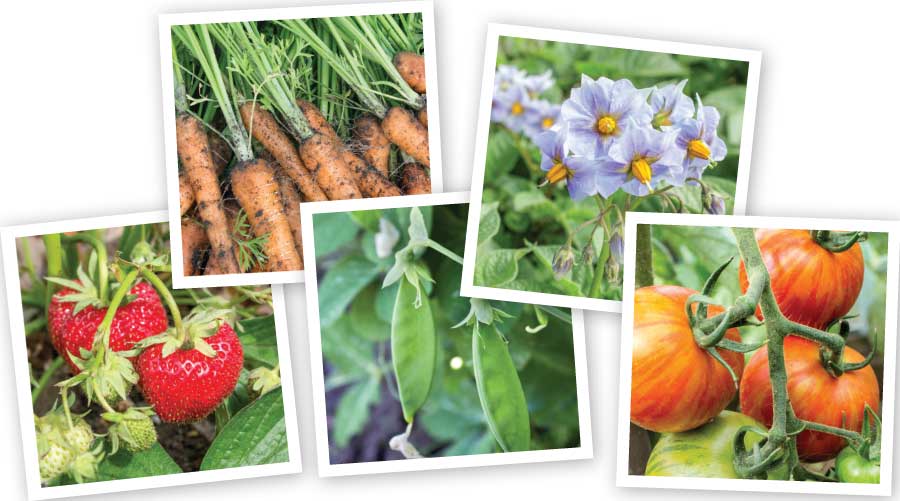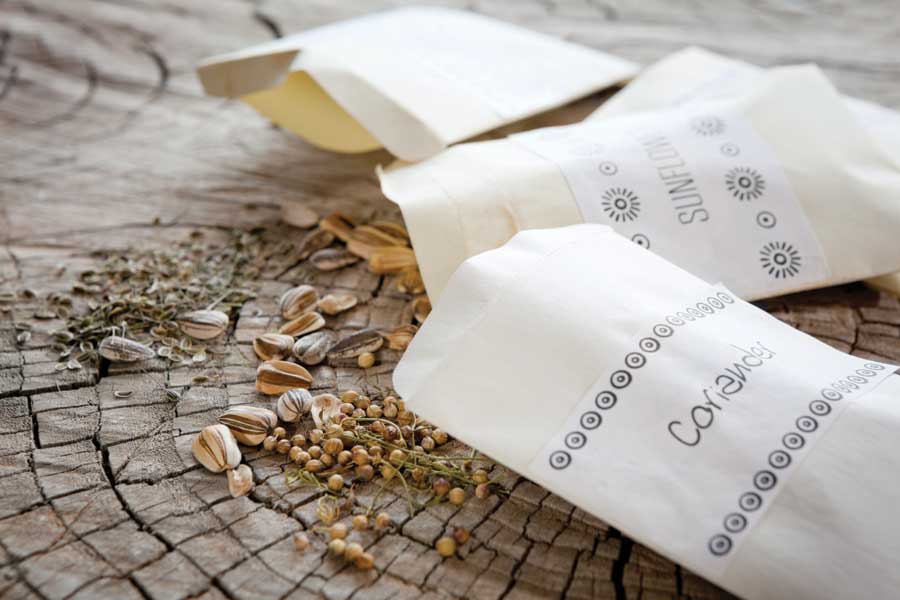A primer on natural fertilizers
02 Mar 2018
Start your garden off on the right foot this spring with natural fertilizers
By Carol O’Meara Spring is an opportunity to start your garden off on the right foot, so why not go with natural fertilizers? Synthetic fertilizers provide nutrients, but they don’t support the soil—essential to healthy plant growth—or improve its structure. If you strictly rely on synthetic chemicals, your garden will wane over time, as synthetic fertilizers harm soil microbes and deplete organic matter. Natural fertilizers replenish the nutrients and trace minerals that plants need. They also improve the soil’s organic matter, which supports the microbes that unlock the fertilizer’s nutrients for plants’ roots to absorb. And they are typically low in salt. All fertilizers need healthy soil microbes to release their nutrients, so start by building up the soil with organic compost, which is packed with microorganisms that break down fertilizer. Only add 1 to 1½ inches of compost to the soil surface and till it in. Adding more than that can lead to a disastrous salt build up in the soil.
Here’s a primer on natural fertilizers and how to best use them.
Mineral Amendments
Humate is dry, powdered humic acid, one of the purest forms of organic matter left after the process of decomposition is complete. Found in any well-decomposed material, humic acid mimics active humus, which supports healthy soil microbes. Humate is not in itself a fertilizer; although it has nitrogen, humate is extremely slow at releasing it. Its benefit lies in the ability to chelate trace metallic micronutrients from the soil and make them available to plants. In Colorado’s alkaline soils, this is crucial for plant growth. How to use it: As an amendment for alkaline soil that’s low in organic matter. Greensand is a greenish iron-potassium silicate, called glauconite, which has the ability to absorb and hold moisture, and loosen clay soils. It contains marine potash, silica, iron, magnesium, lime and other trace minerals. How to use it: Greensand’s nutrients become available slowly, so use it as a soil conditioner in perennial and woody plant beds.Animal Amendments
Liquid fish emulsion and fish meal are made from fish parts that are rendered into a nitrogen-rich fertilizer. Fish meal contains about 10 percent nitrogen and 6 percent phosphorus, while fish emulsion is more variable, depending on how the fish is broken down. How to use it: As a general fertilizer for containers, vegetable gardens and flowering beds. It can have an odor, so don’t use it near sitting areas or on houseplants. Blood meal is waste material from the meat industry that’s dried and ground. Since it’s very high in nitrogen, blood meal can burn plants. Apply it with care, following the label instructions. How to use it: Mix small amounts into the soil underneath vegetables or newly planted perennials, or scratch it into the soil around established plants. Bone meal is another byproduct of the meat industry. Bones are steamed, dried and powdered to release phosphate (phosphorus). Bone meal is an excellent source of readily available phosphate and is often used to support flowering bulbs. How to use it: Colorado soils are naturally high in phosphorus, so limit bone meal to containerized plants or raised beds with manufactured soils like Planters Mix.Plant-Based Amendments
Alfalfa meal and cottonseed meal are ground-up plants or seeds from alfalfa or cotton. These high-nitrogen meals are often combined with other dry products to form complete fertilizers. Cottonseed meal is a slow-release fertilizer that lasts six months to a year; alfalfa’s nitrogen is more quickly released. Look for organic certification, because cotton can have pesticide buildup in its seeds. How to use it: As a dry fertilizer around perennials, shrubs and trees, or in potting mixes. Seaweed fertilizers come in dry and liquid form, and most are kelp-based. Dried, ground kelp meal builds organic matter in the soil and adds trace nutrients. To supersize their fertilizer value, kelp and other seaweeds are rendered into liquid concentrates, a process that also releases naturally occurring plant hormones. Seaweed concentrates are rich in some 60 trace minerals and amino acids and are valued as growth stimulants for plants. How to use it: Till kelp meal into the soil or add it to the compost pile to boost the microbes within. Seaweed and kelp extracts are best used as a foliar spray and provide a broad array of micronutrients and other trace elements that support plant health. The plant hormones also make them excellent for seedlings and transplants. Corn Gluten is a byproduct from the wet-milling processing of corn. Touted as a pre-emergent weed control for turfgrass, corn gluten is very high in nitrogen (10 percent). It comes in granular form so you can easily spread it on the lawn. How to use it: Corn gluten is ideal for turfgrass, so long as you follow the directions and don’t overapply it. Also avoid using it in conjunction with other lawn fertilizers because of its nitrogen content; too much nitrogen on the lawn converts into nitrates, which harms groundwater and aggravates turf diseases.Fungi Amendments
Mycorrhizae are the mycelium of a fungus, living either on or in the roots of a seed plant in a symbiotic relationship. Anchored in the root, mycorrhizae stretch their long, thread-like bodies into the surrounding soil, taking up water and nutrients and feeding them back to the plant. The superfine, root-like web the fungi build also absorbs phosphorus and other nutrients, and feeds them to the plant more rapidly than a plant’s roots can absorb on its own. The result is healthier plants and a reduced need for fertilizer. Grapes, which thrive in very lean soils, need mycorrhizae. Other plants, though not requiring it, still benefit. Trees, shrubs and vegetables all perform better with mycorrhizae. How to use it: The phrase “build it and they will come” applies to garden soils and mycorrhizae. In healthy soil, mycorrhizae already exist; the best application for them is in potting media for containerized trees or perennials. A note of caution: mycorrhizae are living organisms and research has shown that, due to issues in packaging, storage and handling, 95 percent of what you purchase is dead in the package. Also, there are many, many types that prefer different hosts; you have to know what mycorrhizae you have before applying it, or you may be wasting your time and money. Build up your soil and these root-enhancing fungi will come by themselves.Carol O’Meara is a garden writer in Boulder County.












